*NURSING > QUESTIONS & ANSWERS > PROBLEM SET 5.3: HEMODYNAMICS AND MICROCIRCULATION ANSWER KEY,VERIFIED ANSWERS, 100% SCORE (All)
PROBLEM SET 5.3: HEMODYNAMICS AND MICROCIRCULATION ANSWER KEY,VERIFIED ANSWERS, 100% SCORE
Document Content and Description Below
1. A normal individual experiences a deep cut that severs the radial artery near the elbow. Ignoring air resistance, approximately how high will the blood spurt? (Hints: the specific gravity of blood... is 1.050 g cm-3 and the specific gravity of mercury is 13.6 g cm-3 ) Strictly speaking, the only determinant of the height of a column of blood is the velocity at which it exits the artery. This depends somewhat on the size of the hole cut into the artery. We can estimate this height by noting that a column of blood at equilibrium with the blood pressure will reach a height at which the pressure of the column of blood is equal to the blood pressure. This is the case when all of the pressure energy and kinetic energy is converted to gravitational potential energy. From Eq. (5.8.5) we have P’ = P + ½ D v2 + D g h where P’ is the net equivalent pressure, P is the hydrostatic pressure, ½ D v2 is the kinetic energy and D g h is the gravitational potential energy. At the top of the column of squirting blood, P goes to zero and ½ D v2 also goes to zero. Thus all of the pressure is converted into a column of fluid h units high. The pressure of a column of fluid is m g / area where m is the mass, g is the acceleration due to gravity and area is the area of the column of fluid. The mass of the column is given as m = v x D where v is the volume and D is the density. For a right cylinder, v = area x h where h is the height of the column. Thus we have an equation Area x h blood x 1.05 g cm-3 /Area = Area x hHg x 13.7 g cm-3 /Area or h blood = hHg x 13.7/1.05 If the systolic pressure is 120 mm Hg, the blood should rise to a maximum height of h blood = 12 cm x 13.7/1.05 = 156.6 cm This is 61.65 inches, or a little more than 5 feet. This is just enough to reach the ceiling in most houses (8 feet) if you are lying on a table 30" off the floor and you allow 6" between the table and the point of incision. The reality is that the blood will not go that high, because the flowing blood already converts some of its pressure energy to kinetic energy of the blood and dissipates some of it by friction.5.PS3.2 2. At the bifurcation of the femoral artery the pressure is 100 mm Hg. The venous pressure after either the left or right femoral artery is 10 mm Hg. The resistance in the right femoral artery is 1.67 times the resistance through the left femoral artery. The total flow at the bifurcation is 800 mL min-1. How does the flow divide into the left and right femoral arteries? (Hint: what is the conservation of flow? Use this to solve one of the resistance values). We can calculate the total resistance of the two arteries by the relation Flow = ) P / R The total flow is 800 mL min-1 and the pressure drop is 90 mm Hg. Thus the total resistance is R = 90 mm Hg / 800 mL min-1 = 0.1125 mm Hg mL-1 min The total resistance consists of two resistances in parallel. Thus we have 1 / R tot = 1 /R + 1/ 1.67 R = 1.6 / R where R is the resistance in the left femoral artery. This gives R tot = 0.625 R or R = 0.18 mm Hg mL-1 min The flow through the left artery is thus Flow left = 90 mm Hg / 0.18 mm Hg mL-1 min = 500 mL min-1 and the flow through the right artery is Flow right = 90 mm Hg / 0.3 mm Hg mL-1 min = 300 mL min-1 for a total flow of 800 mL min-1. 3. A subject has normal values of 125/80 mm Hg blood pressure and heart rate of 65 bpm and a cardiac output of 5 L min-1. A. If the subject’s blood pressure rises to 140/80, what is the new stroke volume? (Hint: compliance of the aorta does not change) The new stroke volume can be calculated assuming that the compliance of the large vessels does not change. The formula is: C A = )V / )P where )V is the stroke volume, )P is the pulse pressure and CA is the compliance. The normal compliance can be calculated as C A = [5 L min-1 / 65 beats min-1] / 45 mm Hg = 1.709 mL mm Hg-15.PS3.3 The new stroke volume can be calculated using this compliance: )V = 1.709 mL mm Hg-1 x 60 mm Hg = 102.6 mL B. What is the new mean arterial pressure? The new mean arterial pressure is MAP = 80 mm Hg + 1/3 x 60 mm Hg = 100 mm Hg C. If the heart rate does not change, what is the new peripheral resistance? The total peripheral resistance can be calculated from the formula TPR = MAP/ CO where TPR is the total peripheral resistance, MAP is the mean arterial pressure and CO is the cardiac output. Originally the TPR w [Show More]
Last updated: 1 year ago
Preview 1 out of 16 pages
.png)
Reviews( 0 )
Document information
Connected school, study & course
About the document
Uploaded On
Apr 24, 2021
Number of pages
16
Written in
Additional information
This document has been written for:
Uploaded
Apr 24, 2021
Downloads
0
Views
25



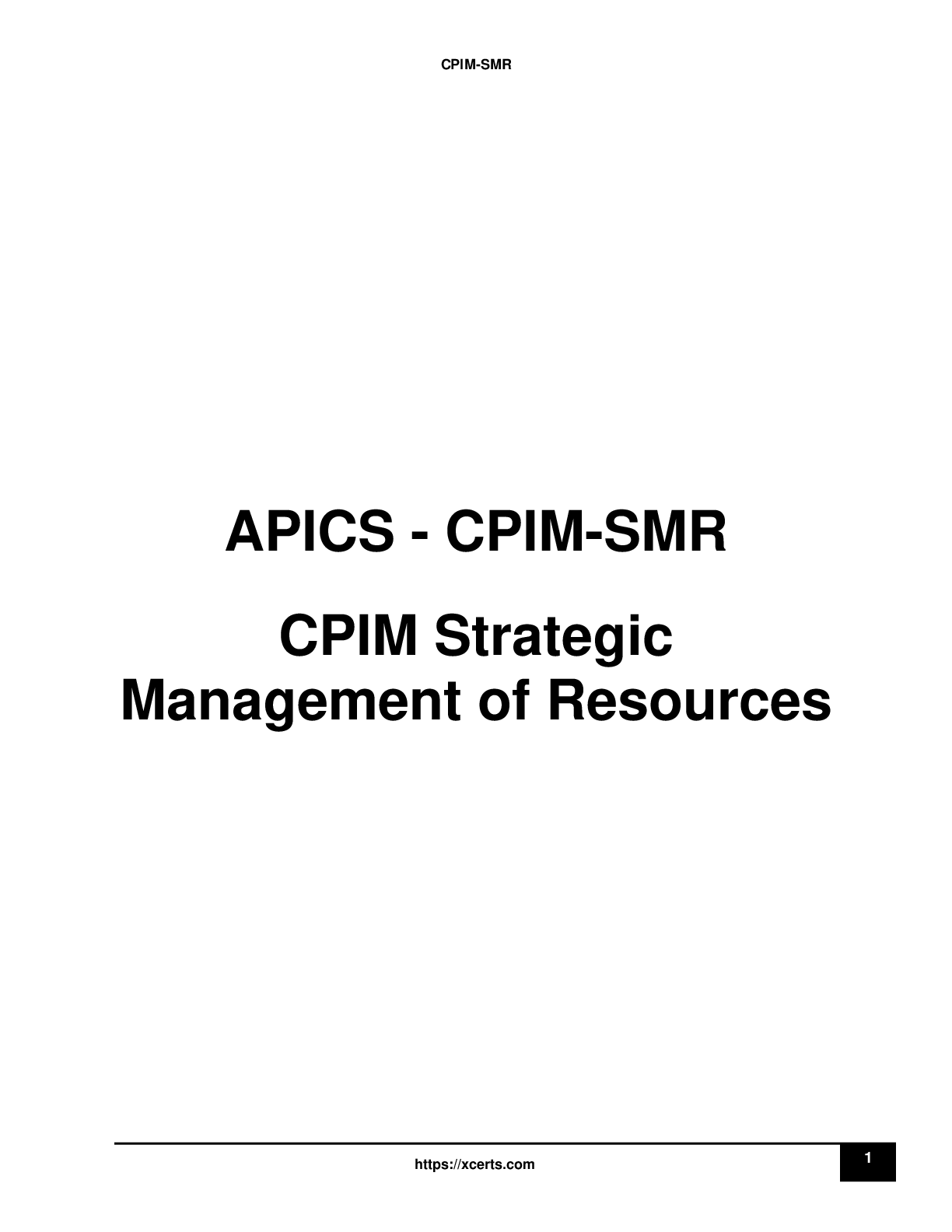


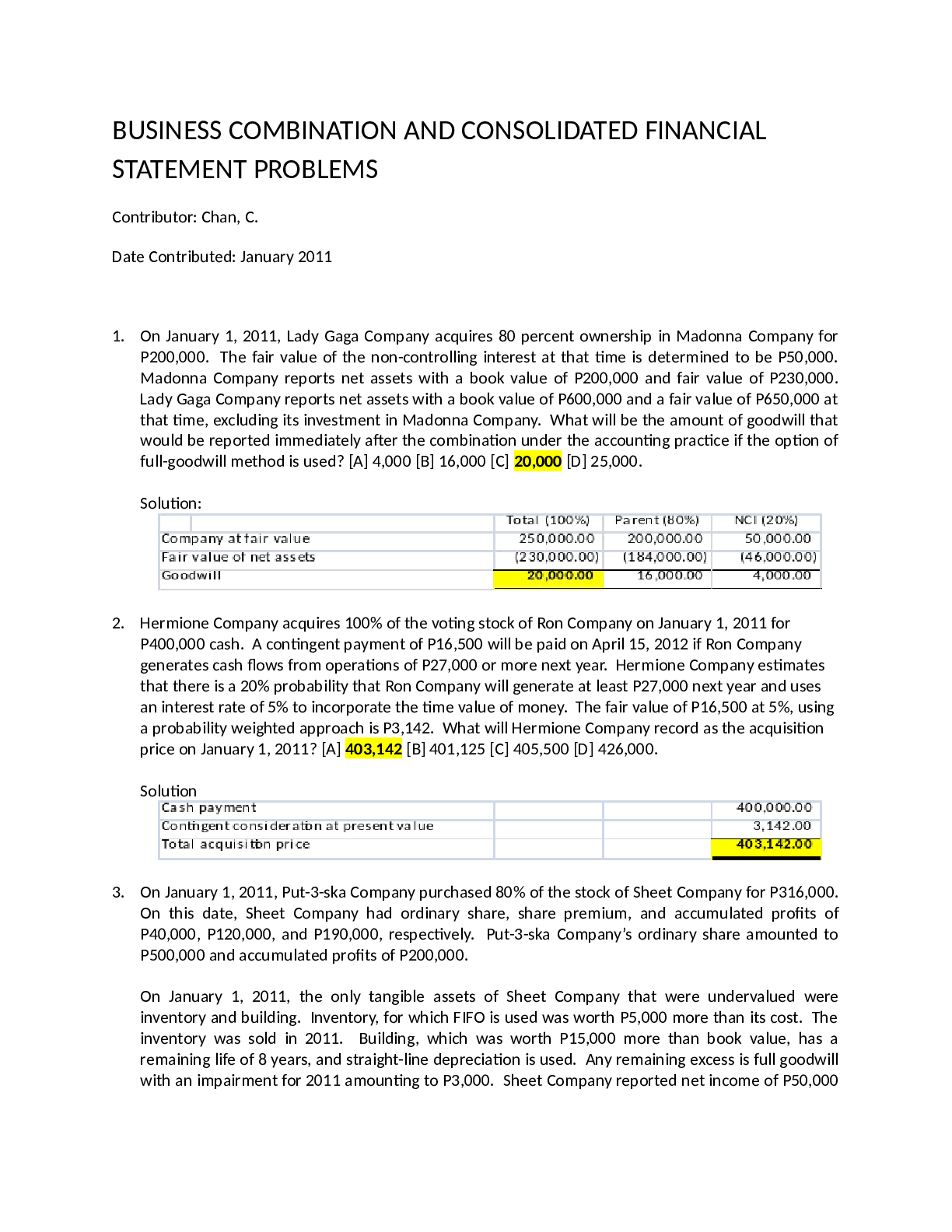

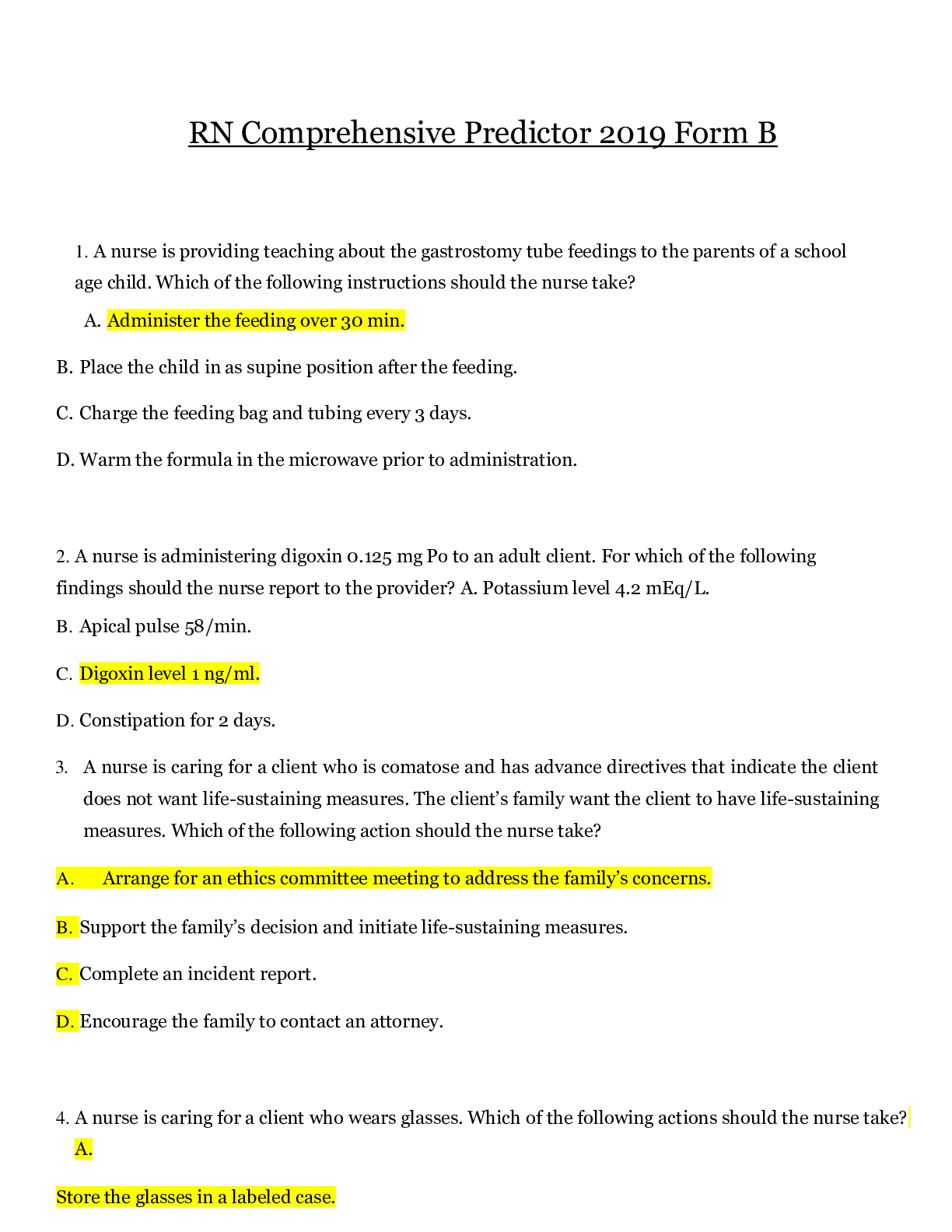

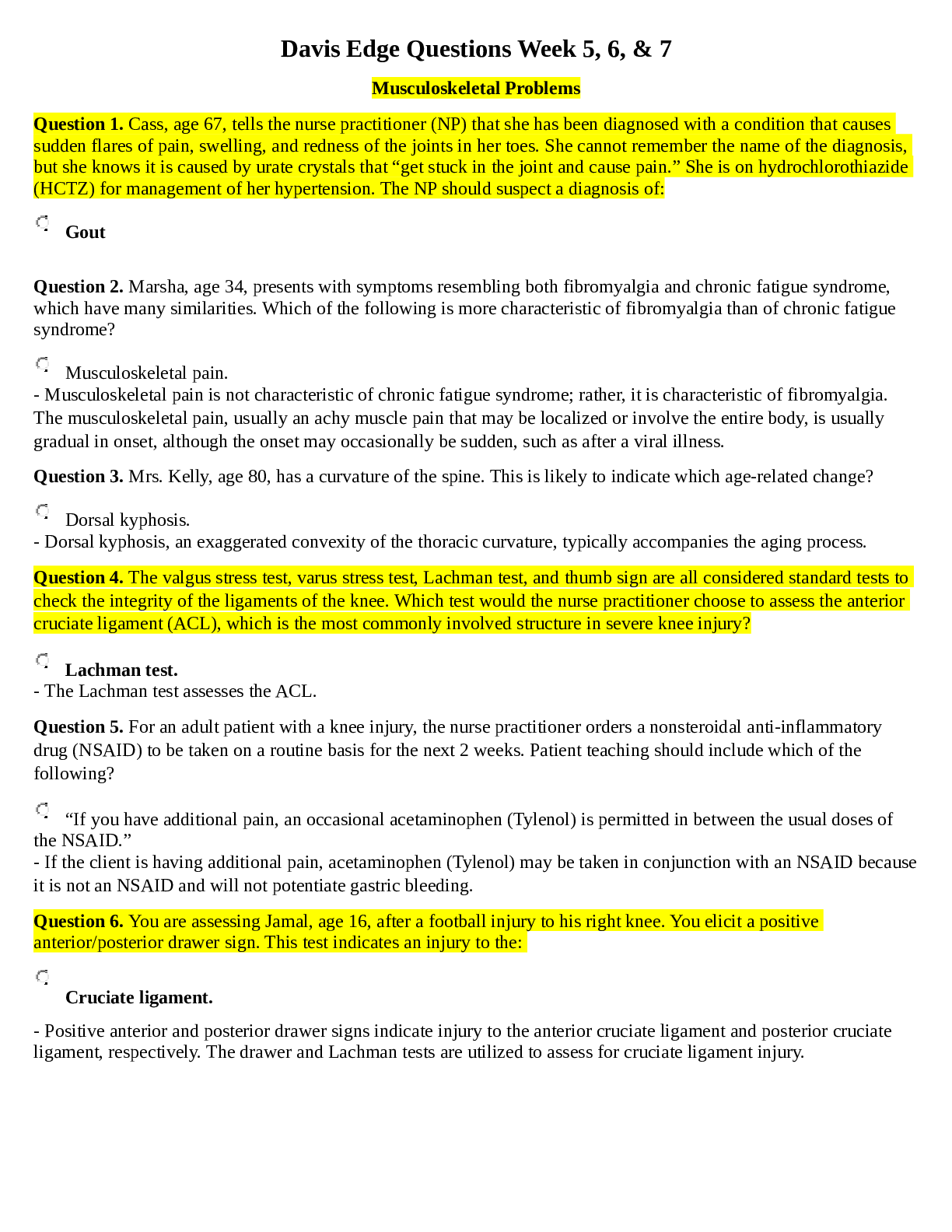
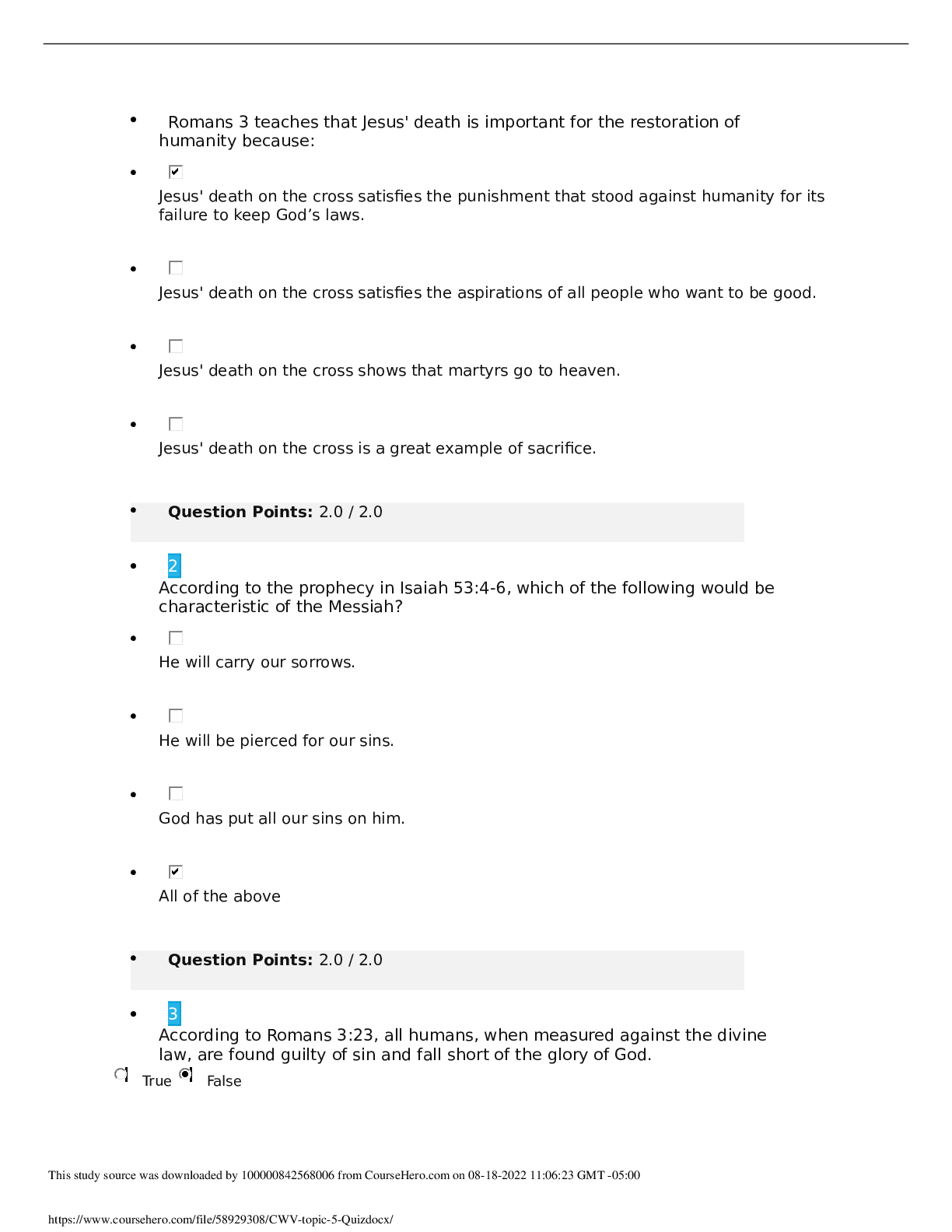
.png)

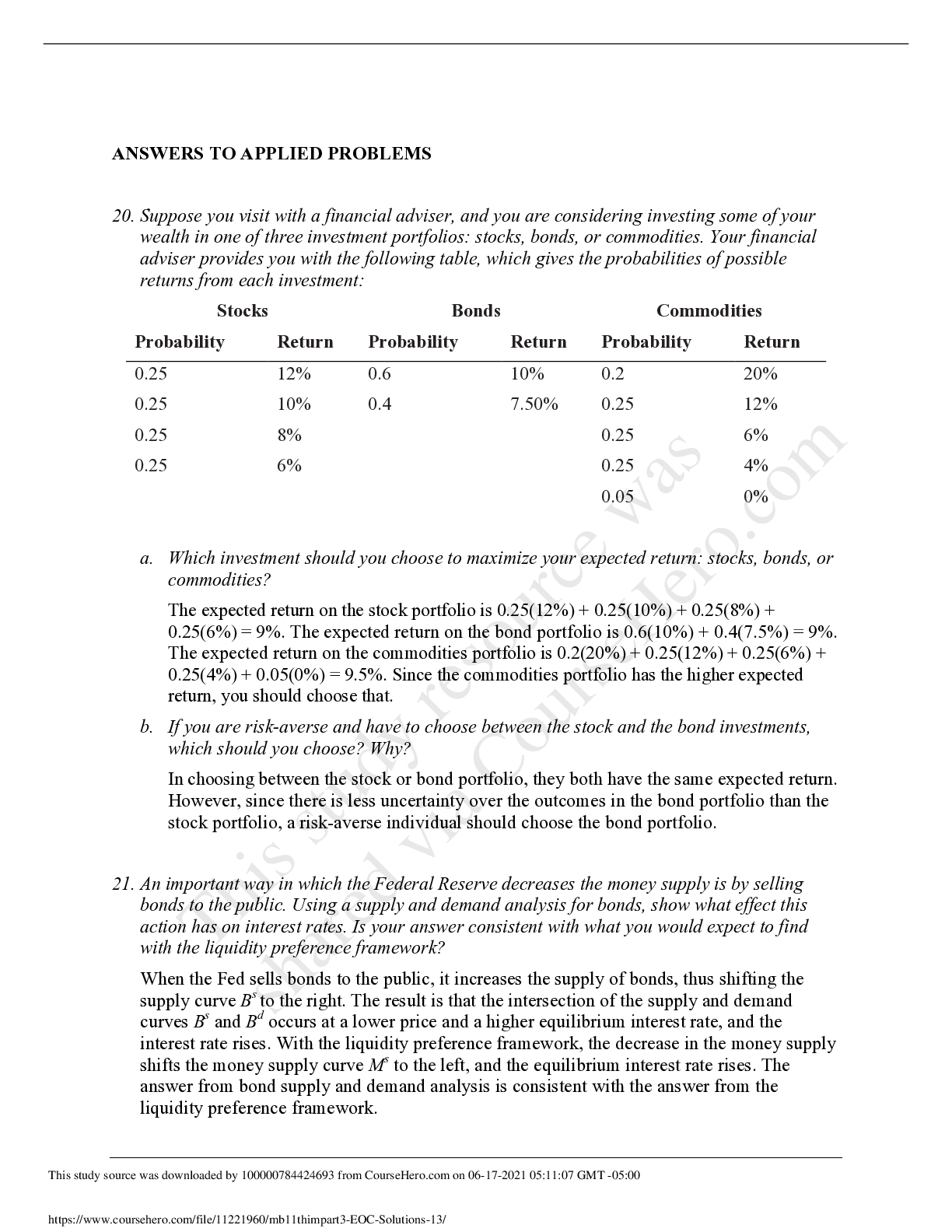
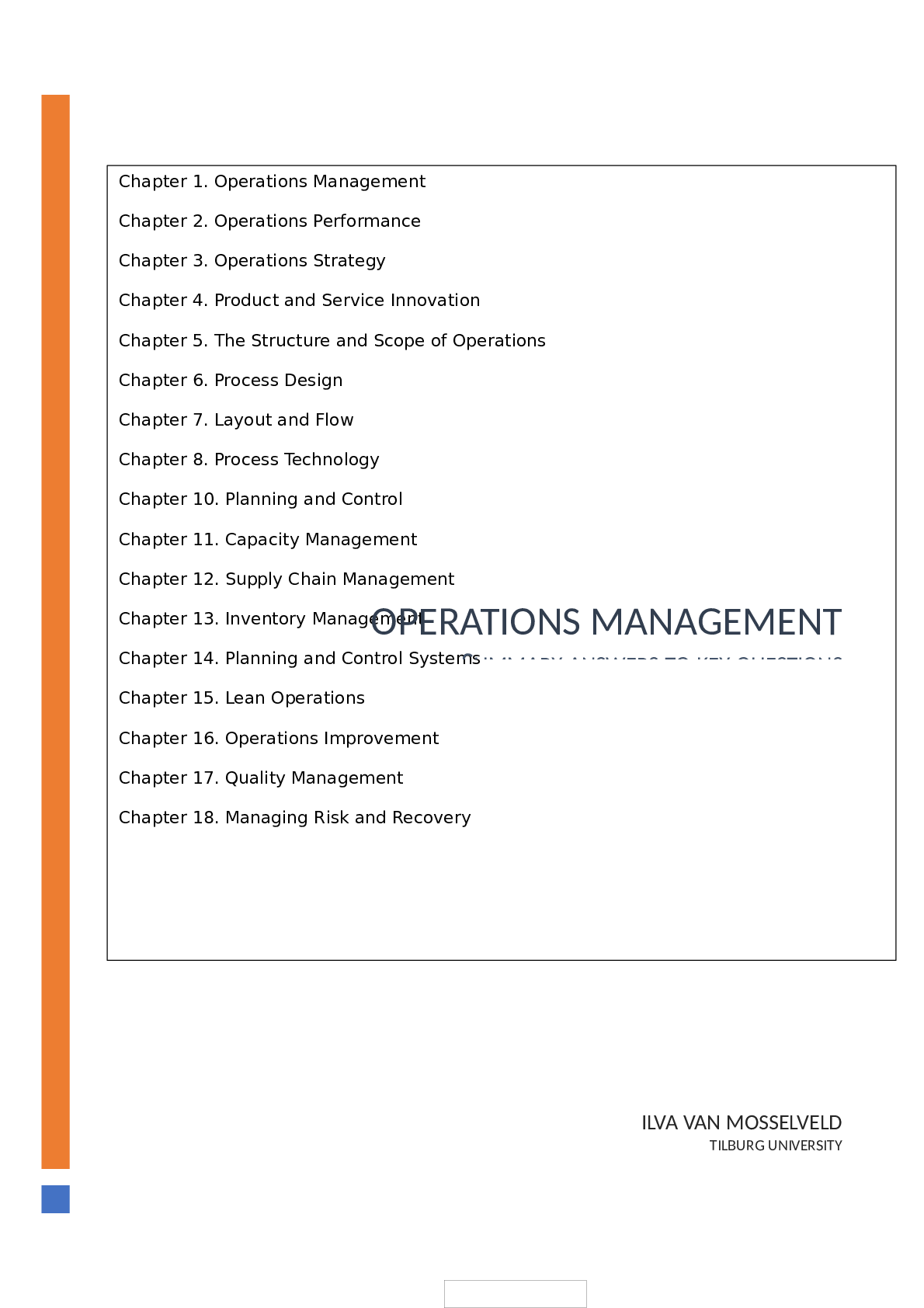

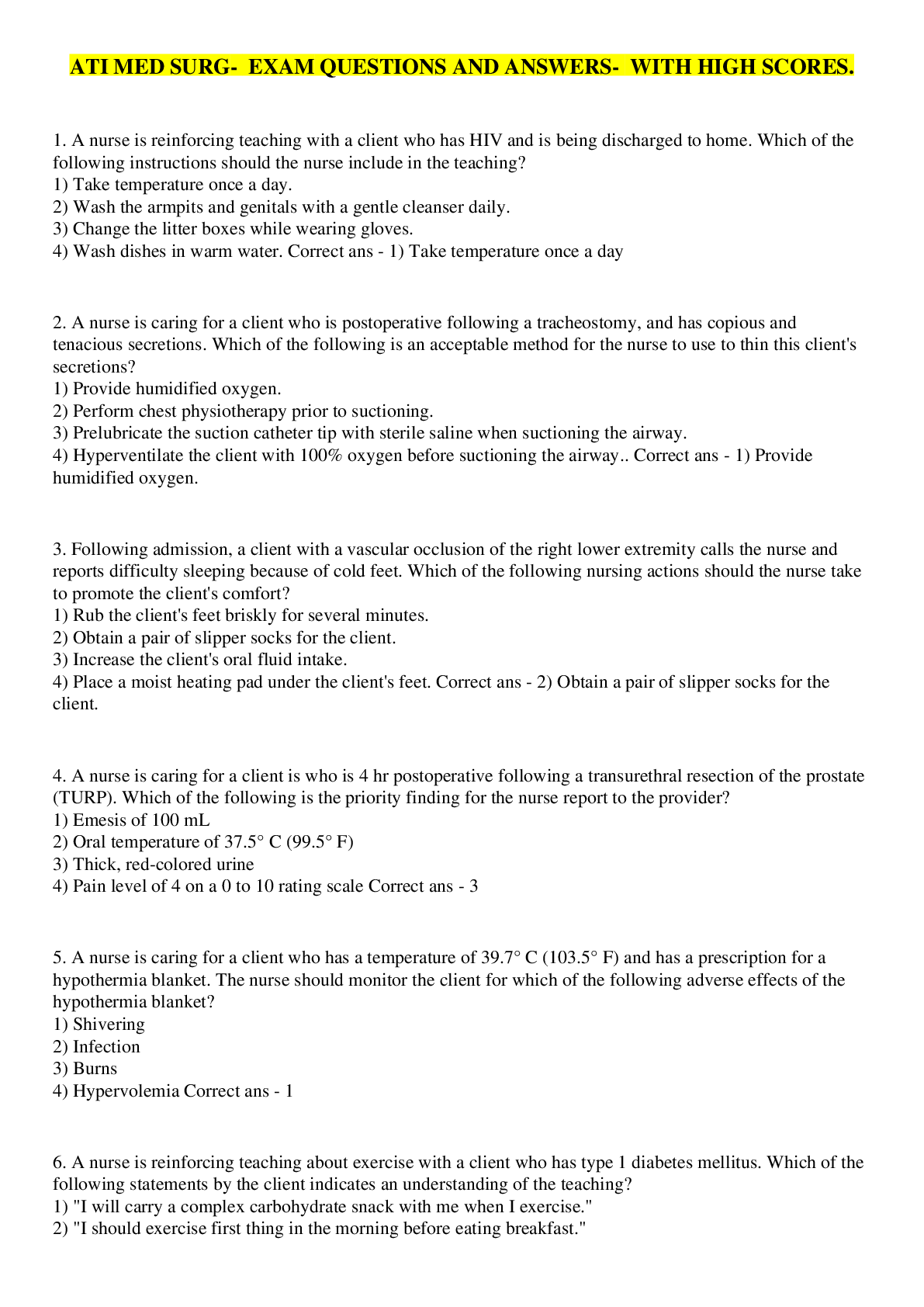


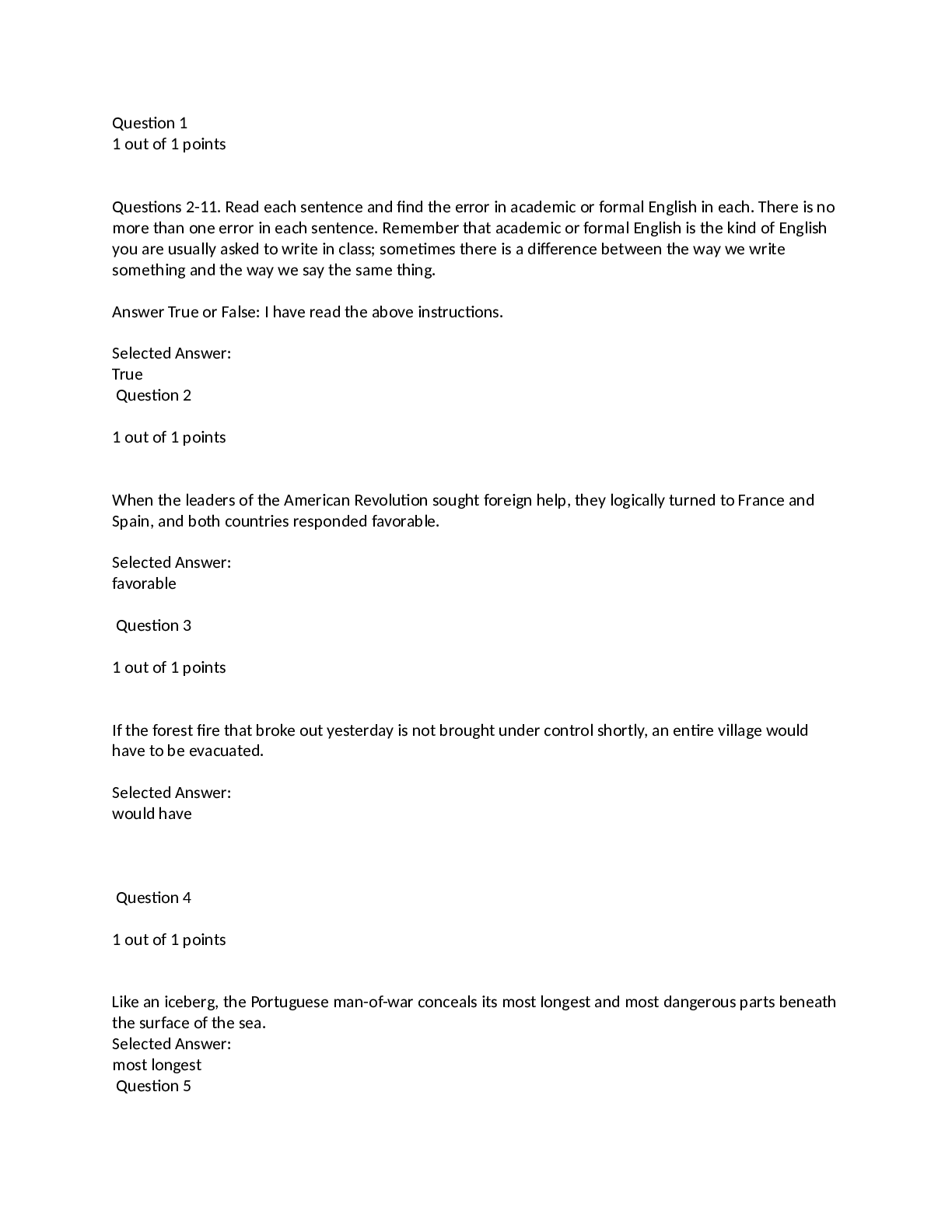
.png)
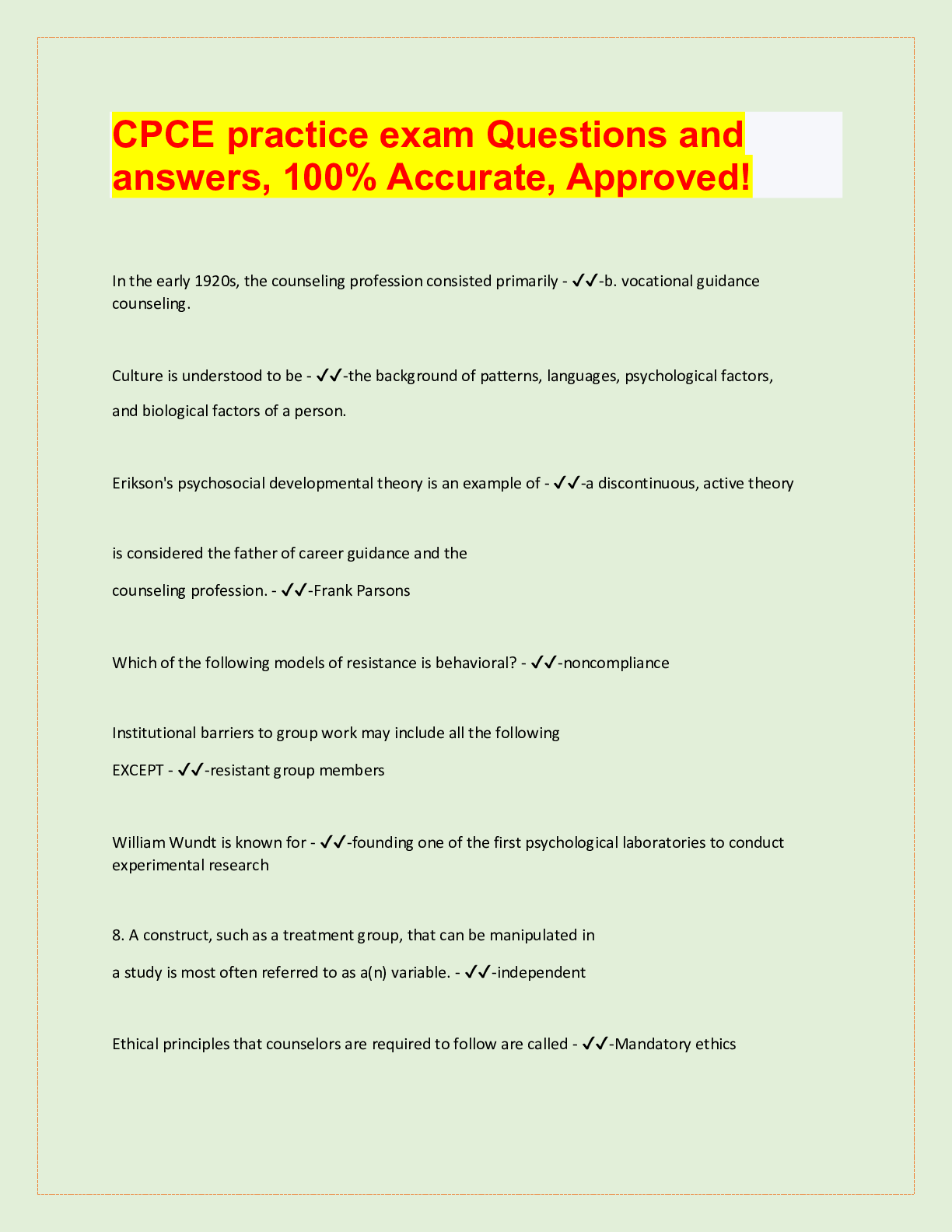
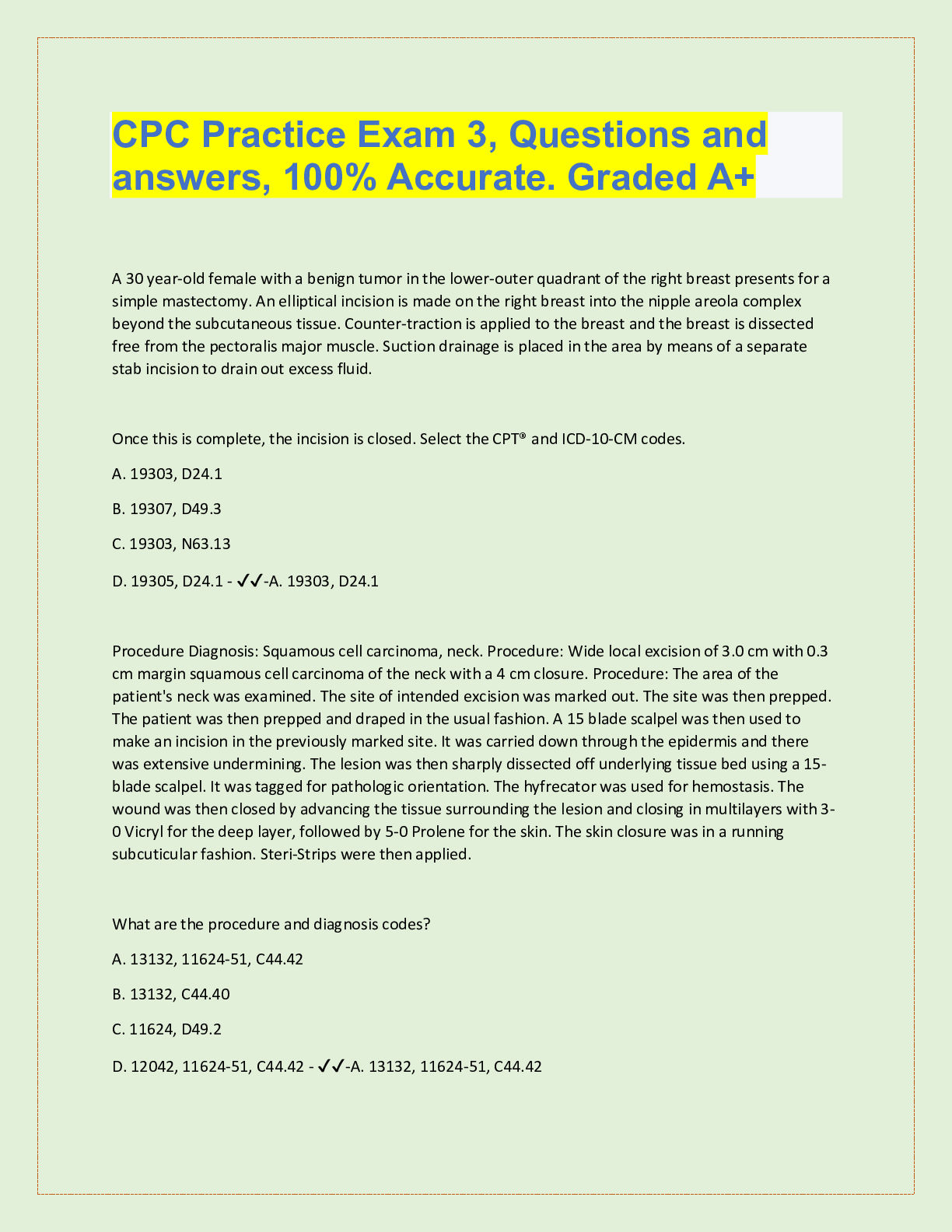
.png)


.png)


.png)

.png)
.png)

